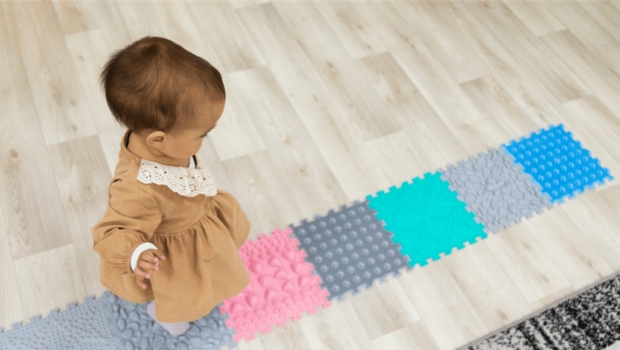Practicing Sensory Skills at Home: How To Teach Kids the Senses
From birth, children are naturally curious, letting their senses lead the way as they discover the world around them. Through sight, hearing, smell, taste and touch, they learn to navigate their environment and recognize their place in it. Although the five senses are innate skills, kids need to practice, understand and integrate these sensations as they mature, so that they can anticipate the dangers, enjoy the thrills, develop their thinking and cope with new emotions.
Sensory skill-building teaches children how to explore their surroundings with confidence. Exercises and games that develop the senses can make the learning experience fun for kids, while also allowing parents and instructors to guide the process and marvel at their children’s discoveries.
Sight
Eye Spy: This game involves one player that chooses a secret object and provides a clue so that the other players can guess what it is. The clue is introduced with the phrase, “I spy with my little eye.” Players take turns guessing until the object is identified. Through laughs and giggles, participating children are invited to notice individual items around the room or at the park, sparking curiosity and developing cognitive skills.
Color of the Week: Each week, the family agrees to look for items that are a certain color. The game may inspire discussions about the different shades and tones of the chosen color, as well as how this hue makes them feel. It supports communication skills at home, which helps kids feel safe, seen and valued.
Smell
Scent Search: Using a diffuser with children is a great way to help them distinguish unique scents such as sweet, floral or spicy. The conversation can then expand to explore how different aromas make them feel, and to help children identify their likes and dislikes.
Grow a Garden: A family garden filled with flowers and herbs provides unique sensory experiences for children, including new scents, sights and textures. For those living in cities, potted flowers and herbs around the home will have a similar effect.
Taste
Fabulous Fruit: Encourage children to try different fruits. From tangy grapefruit to sweet-smelling strawberries or mushy bananas—there are so many flavors, aromas and textures to explore as kids learn to appreciate the present moment. This can also become a wonderful opportunity to talk about how a fruit develops from a tiny seed.
Dinnertime Delights: Have a pizza or pasta buffet where everyone gets to choose their topping. This encourages children to try new ingredients and talk about the different flavors they encounter.
Hearing
Walk and Listen: While strolling in nature or in town, stop every five minutes and ask everyone to listen quietly to the different sounds. After 30 seconds, start walking again and take turns describing in detail what each person heard and guessing what could have made the sound. Walking, especially in nature, soothes the nervous system and fosters deep family connections.
Bedtime Singalong: “I always tell my parents to sing to their kids at bedtime,” says Crae Akerson, a Connecticut-based occupational therapist specializing in sensory strategies. “It is one of the most powerful ways to use sound for deep connection and feelings of safety.”
Touch
Sensory Bins: “Fill different bins with kidney beans, split peas or rice. Hide little objects or toys in them and have your kids reach in the bins to find them,” recommends Akerson. Without removing the item from the bin, ask the child to describe the object with as many details as possible.
Testing Textiles: At bedtime, bring patches of different fabrics like cotton, wool, flannel, sheep skin, burlap or silk, and entice a child to touch and describe the feel of each textile. In addition to learning about the sense of touch, they may also pick up a few vocabulary words.
Interoception
According to Brad Chapin, a child psychologist, author and director of clinical services at Stormont-Vail Health, in Topeka, Kansas, there is a sixth sense. “Interoception is the ability to sense and interpret internal signals from the body such as heart rate, hunger and internal warning signs when feeling dysregulated,” he explains. “This is important, especially now, because there is so much noise and overstimulation in our world. It can be easy to lose our ability to tap into the internal world of ourselves, which is necessary in helping us regulate our emotions throughout the day.”
Labeling Body Cues: To help children make the connection between their bodies and their emotions, it is helpful for adults to model the relationship. For example, Chapin suggests saying to a child, “My face feels warm when the sun shines on it,” or “I can tell I am feeling nervous because I feel my heart beating faster, and I feel cold.” Encourage children to share their emotions and how their body feels at that time.
Exploring Facial Expressions: “While watching TV, ask your kids, ‘What do you think that character is feeling like right now? Sad? Happy?’” Chapin recommends. By learning how to see the emotional world inside others, kids begin to develop empathy.
Christina Connors is a writer, singer and creator of a YouTube series for children. Learn more at ChristinasCottage444.com.





























